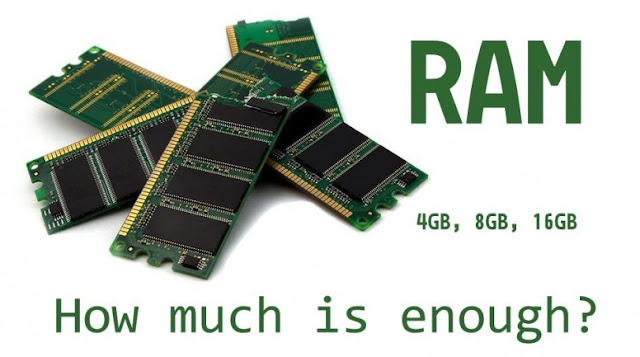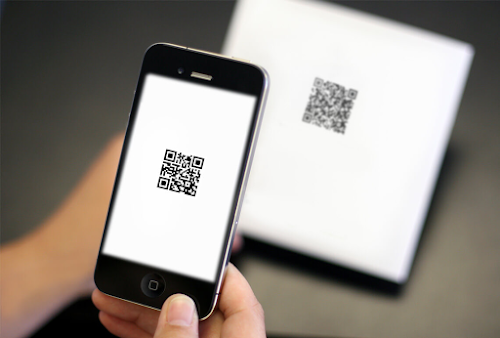RAM or Random Acess Memory is found on every mobile phone or laptop that you are currently using. We often find this in the specifications of a Smartphone or a computer but we don't know exactly the uses and its standards. So in this article let's explore the world of Random Acess Memory.
What is Random Acess Memory?
Random-access memory is a form of computer data storage that stores data and machine code currently being used. A random-access memory device allows data items to be read or written in almost the same amount of time irrespective of the physical location of data inside the memory. RAM is used to Read and Write data into it which is accessed by CPU randomly. RAM is volatile in nature, it means if the power goes off, the stored information is lost. RAM is used to store the data that is currently processed by the CPU. Most of the programs and data that are modifiable are stored in RAM.RAM is an essential element if want to multi-task on your Smartphone or Computer it basically allows to keep multiple Apps, Programs & Softwares running in the background.RAM also plays a crucial role while you are gaming as it keeps that game loaded into the Random Acess Memory. So next time you buy a smartphone or a computer do check the amount of RAM and the RAM Standard that the device has.
The RAM that we use in a Smartphone or Computer is typically an LP DRR RAM( Low Power Double-Data-Rate Random Acess Memory)
There are various DDR RAM Standards that have varying Data Transfer speeds. The faster the Data Transfer Speeds the faster your computer or smartphone will be able to respond with the CPU and give you a fast and lag-free performance.
The RAM Standards are as follows
| DDR SDRAM standard | Release year | Bus clock (MHz) | Internal memory clock (MHz) | Prefetch (min burst) | Transfer rate (MT/s) | Voltage (V) | DIMM pins | SO-DIMM pins | MicroDIMM pins |
|---|---|---|---|---|---|---|---|---|---|
| DDR1 | 2000 | 100–200 | 100–200 | 2n | 200–400 | 2.5/2.6 | 184 | 200 | 172 |
| DDR2 | 2003 | 200–533.33 | 100–266.67 | 4n | 400–1066.67 | 1.8 | 240 | 200 | 214 |
| DDR3 | 2007 | 400–1066.67 | 100–266.67 | 8n | 800–2133.33 | 1.5/1.35 | 240 | 204 | 214 |
| DDR4 | 2014 | 800–1600 | 200-400 | 8n | 1600–3200 | 1.2/1.05 | 288 | 256 | — |
The Amount of RAM that you need on a smartphone changes from Person to person according to the usage. The smartphone comes with a maximum of 10GB RAM. For a person who has a very minimal usage can use a phone with 3GB of RAM. For a normal user who uses his phone normally and uses it for day to day tasks like social media and moderate gaming usage can go in with 4GB RAM to 6GB of RAM.8GB or 10GB of RAM is just a specification bump game and practically in real life usage there will be a rare user who requires this much RAM and practically everyone can do everything in a 6GB RAM Smartphone as of 2019. If you are looking for a phone that has got you covered in the future you can buy one with 8GB of RAM and it will get you covered even if in the future you require more RAM.
Other Types of Random Acess Memory
Integrated RAM chips are available in two forms
- SRAM(Static RAM)
- DRAM(Dynamic RAM)
SRAM Vs DRAM
SRAM Memory: -The SRAM memories consist of circuits capable of retaining the stored information as long as the power is applied. That means this type of memory requires constant power. SRAM memories are used to build Cache Memory.
DRAM Memory: -DRAM stores the binary information in the form of electric charges that applied to capacitors. The stored information on the capacitors tend to lose over a period of time and thus the capacitors must be periodically recharged to retain their usage. The main memory is generally made up of DRAM chips.
Types of DRAM
- Asynchronous DRAM (ADRAM): The DRAM described above is the asynchronous type DRAM. The timing of the memory device is controlled asynchronously. A specialized memory controller circuit generates the necessary control signals to control the timing. The CPU must take into account the delay in the response of the memory.
- Synchronous DRAM (SDRAM): These RAM chips’ access speed is directly synchronized with the CPU’s clock. For this, the memory chips remain ready for operation when the CPU expects them to be ready. These memories operate at the CPU-memory bus without imposing wait states. SDRAM is commercially available as modules incorporating multiple SDRAM chips and forming the required capacity for the modules.
- Double-Data-Rate SDRAM (DDR SDRAM): This faster version of SDRAM performs its operations on both edges of the clock signal; whereas a standard SDRAM performs its operations on the rising edge of the clock signal. Since they transfer data on both edges of the clock, the data transfer rate is doubled. To access the data at a high rate, the memory cells are organized into two groups. Each group is accessed separately.
- Rambus DRAM (RDRAM): The RDRAM provides a very high data transfer rate over a narrow CPU-memory bus. It uses various speedup mechanisms, like synchronous memory interface, caching inside the DRAM chips and very fast signal timing. The Rambus data bus width is 8 or 9 bits.
- Cache DRAM (CDRAM): This memory is a special type DRAM memory with an on-chip cache memory (SRAM) that acts as a high-speed buffer for the main DRAM.
Stay tuned for more Tech updates and allow notifications to get notified whenever I post a new update or article







Comments
Post a Comment